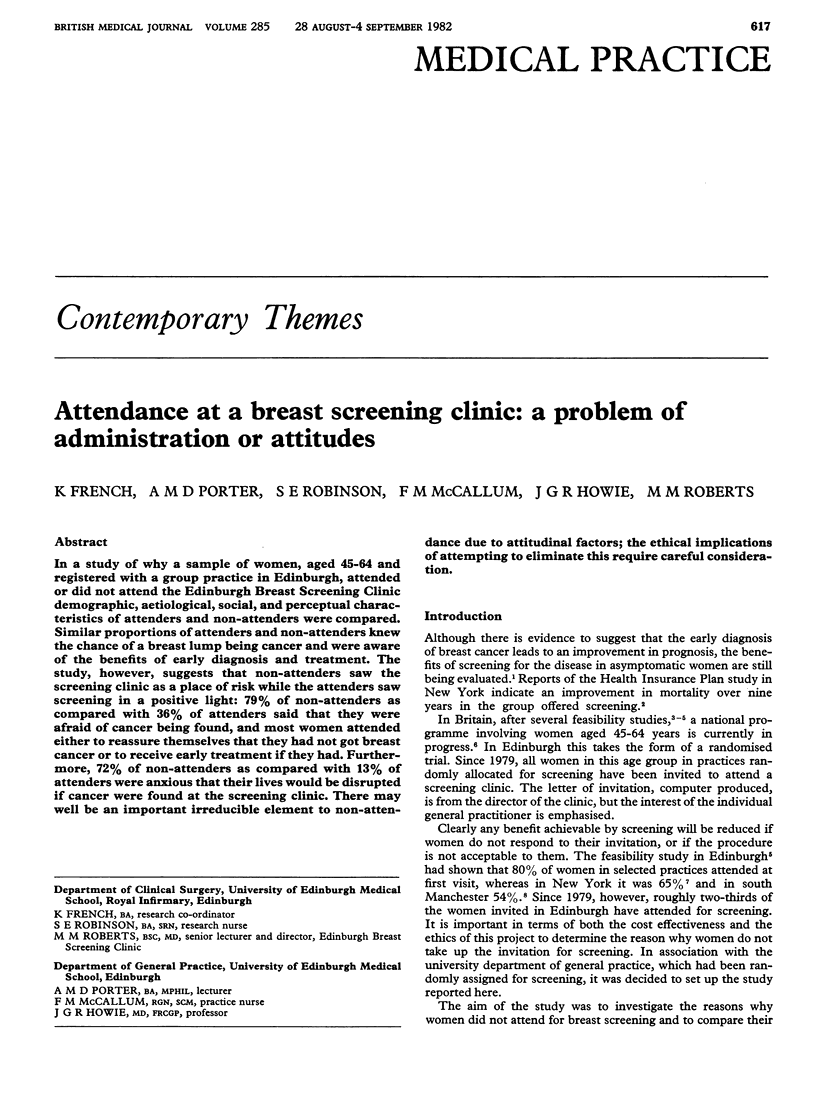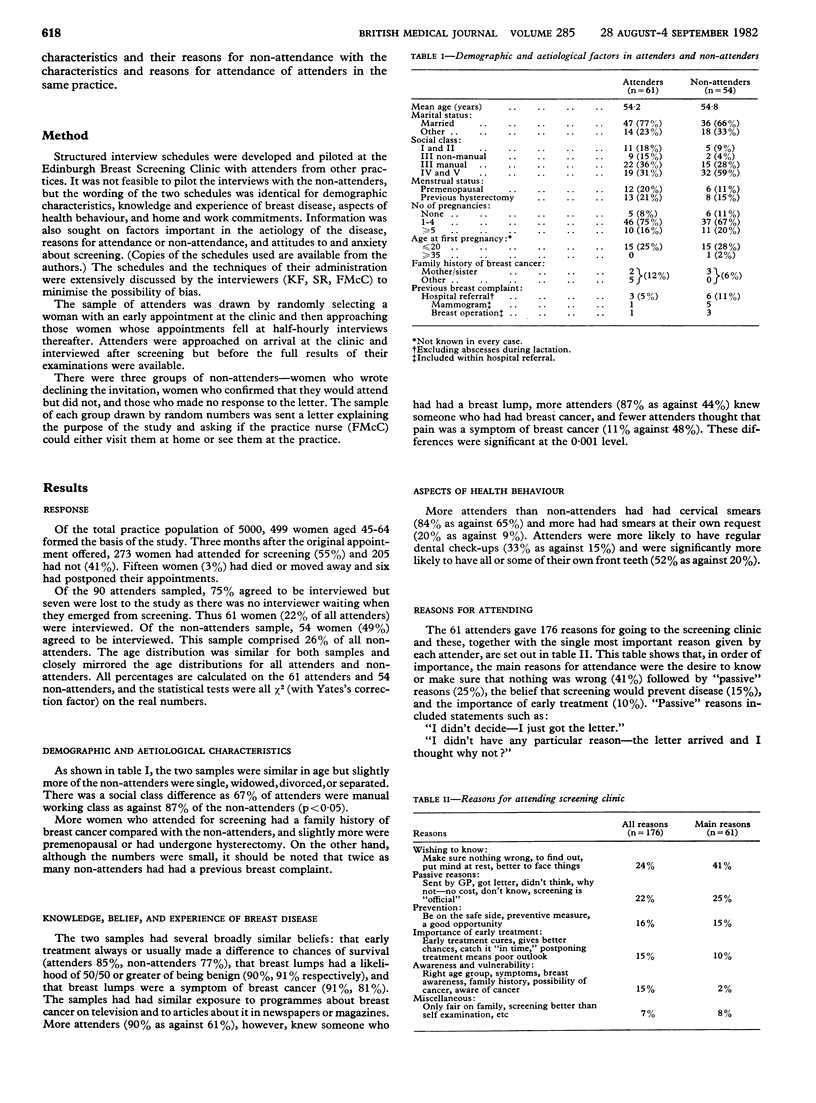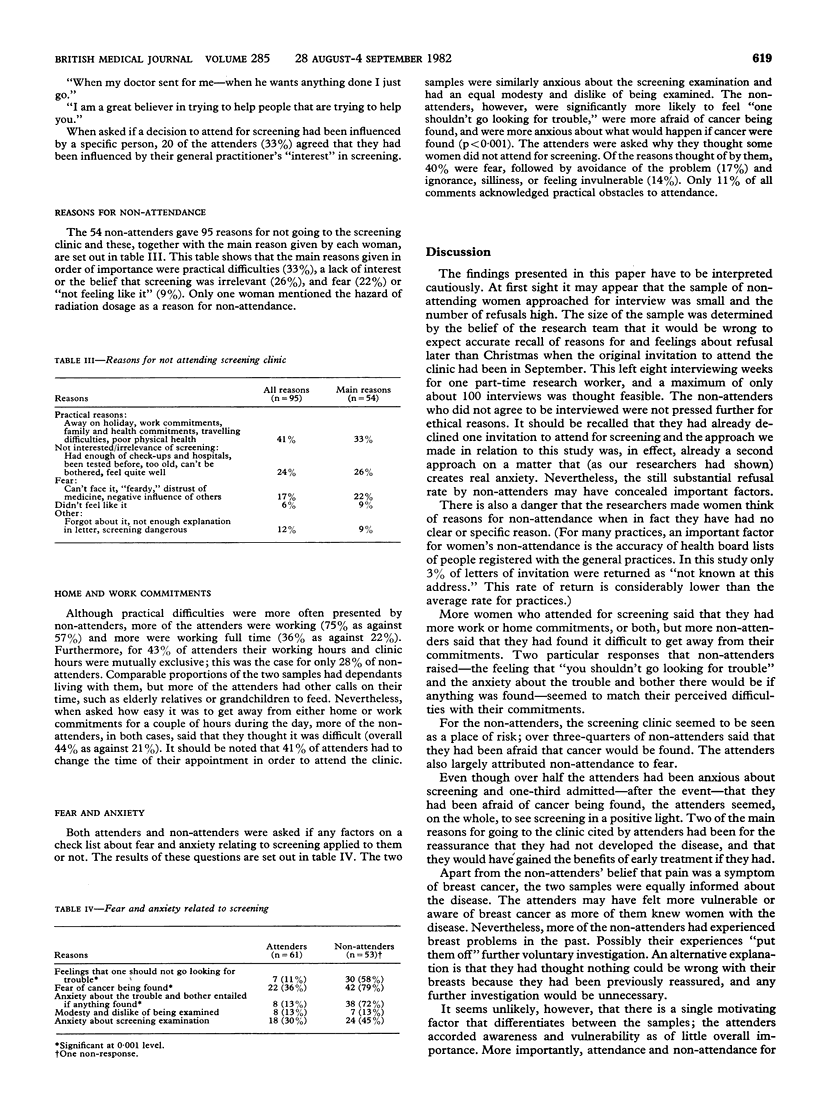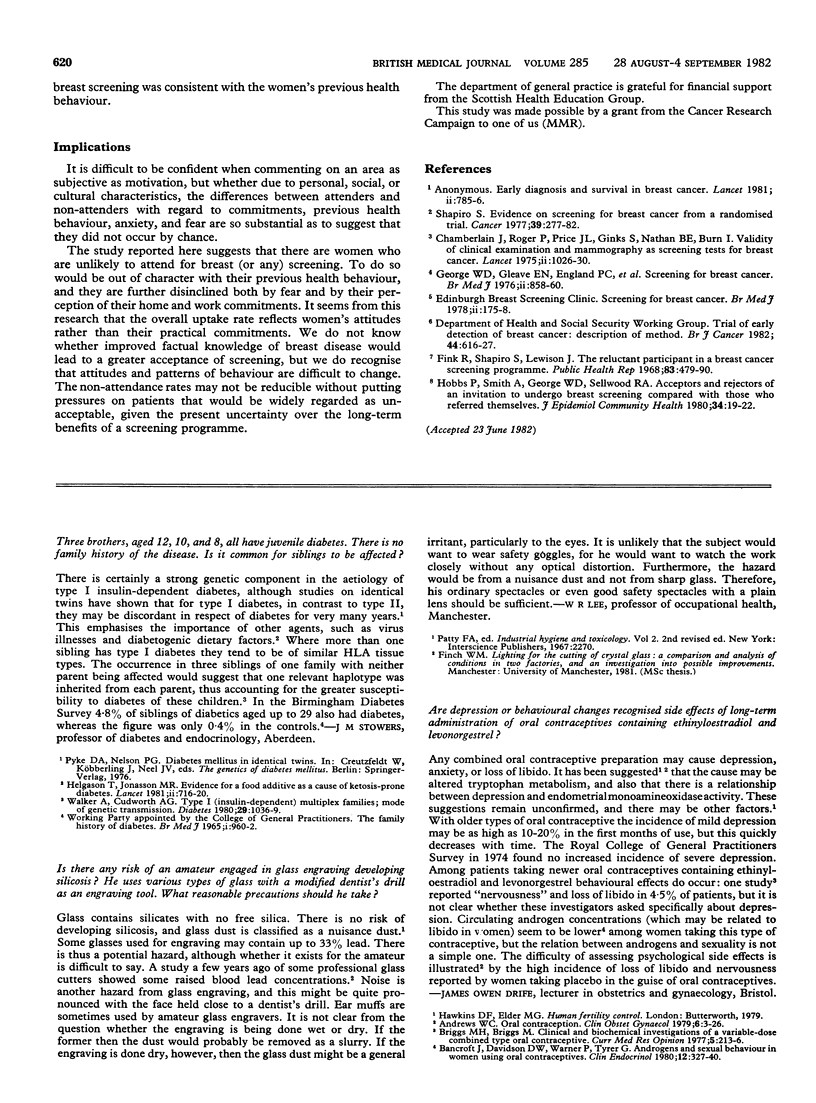Abstract
In a study of why a sample of women, aged 45-64 and registered with a group practice in Edinburgh, attended or did not attend the Edinburgh Breast Screening Clinic demographic, aetiological, social, and perceptual characteristics of attenders and non-attenders were compared. Similar proportions of attenders and non-attenders knew the chance of a breast lump being cancer and were aware of the benefits of early diagnosis and treatment. The study, however, suggests that non-attenders saw the screening clinic as a place of risk while the attenders saw screening in a positive light: 79% of non-attenders as compared with 36% of attenders said that they were afraid of cancer being found, and most women attended either to reassure themselves that they had not got breast cancer or to receive early treatment if they had. Furthermore, 72% of non-attenders as compared with 13% of attenders were anxious that their lives would be disrupted if cancer were found at the screening clinic. There may well be an important irreducible element to non-attendance due to attitudinal factors; the ethical implications of attempting to eliminate this require careful consideration.
Full text
PDF



Selected References
These references are in PubMed. This may not be the complete list of references from this article.
- Andrews W. C. Oral contraception. Clin Obstet Gynaecol. 1979 Apr;6(1):3–26. [PubMed] [Google Scholar]
- Bancroft J., Davidson D. W., Warner P., Tyrer G. Androgens and sexual behaviour in women using oral contraceptives. Clin Endocrinol (Oxf) 1980 Apr;12(4):327–340. doi: 10.1111/j.1365-2265.1980.tb02718.x. [DOI] [PubMed] [Google Scholar]
- Briggs M. H., Briggs M. Clinical and biochemical investigations of a variable-dose combined type oral contraceptive. Curr Med Res Opin. 1977;5(3):213–216. doi: 10.1185/03007997709110168. [DOI] [PubMed] [Google Scholar]
- Chamberlain J., Rogers P., Price J. L., Ginks S., Nathan B. E., Burn I. Validity of clinical examination and mammography as screening tests for breast cancer. Lancet. 1975 Nov 22;2(7943):1026–1030. doi: 10.1016/s0140-6736(75)90304-9. [DOI] [PubMed] [Google Scholar]
- Fink R., Shapiro S., Lewison J. The reluctant participant in a breast cancer screening program. Public Health Rep. 1968 Jun;83(6):479–490. [PMC free article] [PubMed] [Google Scholar]
- George W. D., Gleave E. N., England P. C., Wilson M. C., Sellwood R. A., Asbury D., Hartley G., Barker P. G., Hobbs P., Wakefield J. Screening for breast cancer. Br Med J. 1976 Oct 9;2(6040):858–860. doi: 10.1136/bmj.2.6040.858. [DOI] [PMC free article] [PubMed] [Google Scholar]
- Helgason T., Jonasson M. R. Evidence for a food additive as a cause of ketosis-prone diabetes. Lancet. 1981 Oct 3;2(8249):716–720. doi: 10.1016/s0140-6736(81)91048-5. [DOI] [PubMed] [Google Scholar]
- Hobbs P., Smith A., George W. D., Sellwood R. A. Acceptors and rejectors of an invitation to undergo breast screening compared with those who referred themselves. J Epidemiol Community Health. 1980 Mar;34(1):19–22. doi: 10.1136/jech.34.1.19. [DOI] [PMC free article] [PubMed] [Google Scholar]
- Walker A., Cudworth A. G. Type I (insulin-dependent) diabetic multiplex families: mode of genetic transmission. Diabetes. 1980 Dec;29(12):1036–1039. doi: 10.2337/diab.29.12.1036. [DOI] [PubMed] [Google Scholar]


